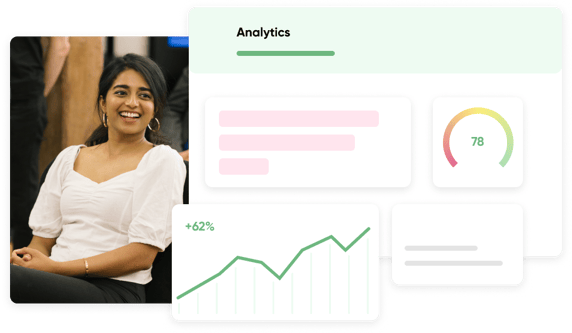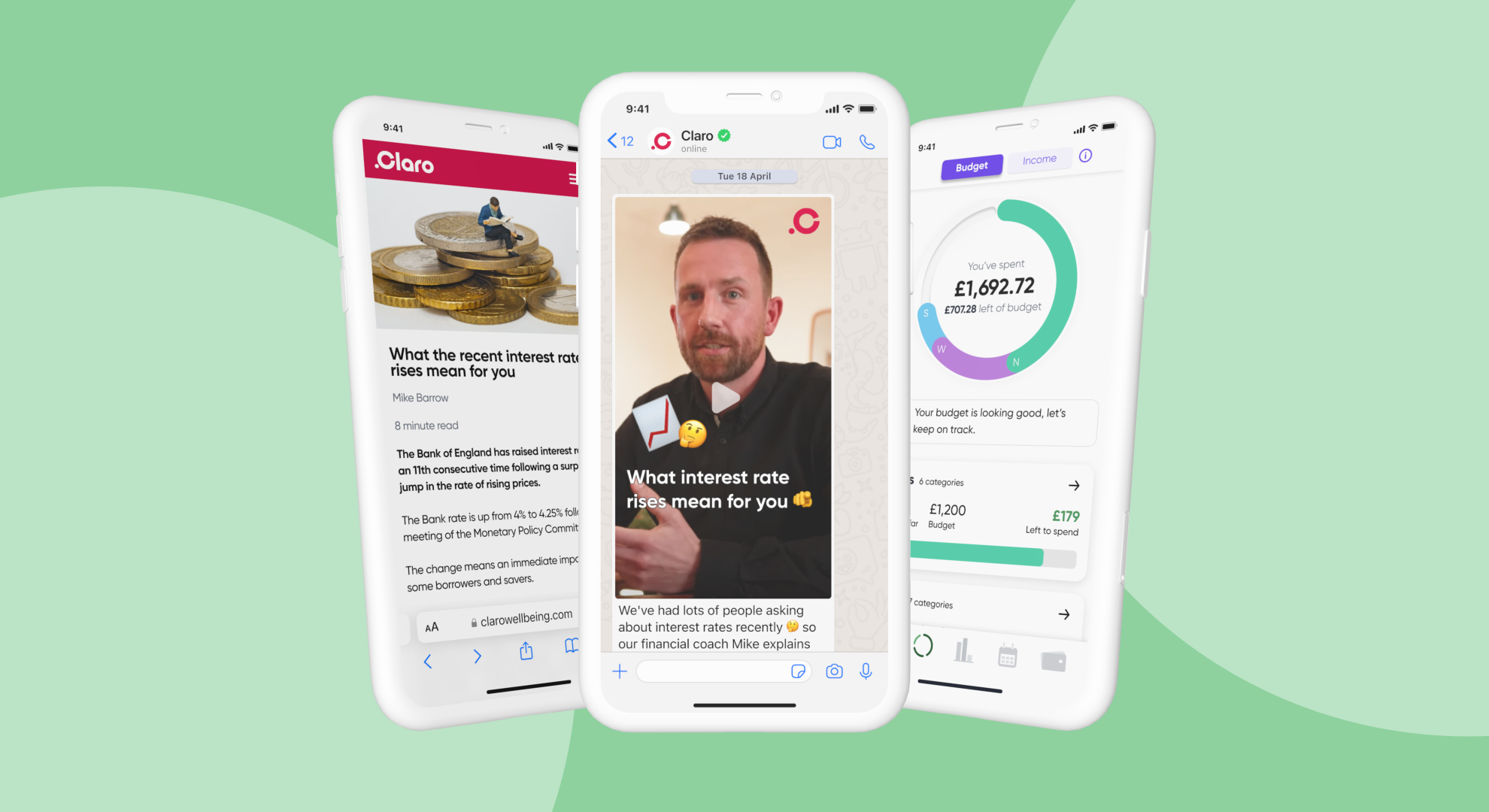6 min read
Should employers acknowledge Blue Monday?
Blue Monday (15 January) has a mixed reputation. But there’s still value in using the day to raise awareness of mental health and wellbeing...

Improving benefit uptake among employees can be a tricky endeavour for even the most experienced HR and benefits leaders.
We've all encountered frustrating situations where employees, despite previously expressing enthusiasm, fail to use the benefits they are offered. And with 32% of an organisation’s salary costs spent on employee benefits, on average, according to Open Sourced Workplace, it’s an expensive exercise.
The causes of low benefits uptake can vary, with some factors within HR’s control – the package offered, the providers chosen, the communication used. While other factors, such as company culture, are less so.
Yet employee benefits remain a must-have part of total reward. A strong package is a win-win for the employee and the employer. It will attract and retain staff, while boosting culture and productivity.
When employees don’t engage in their benefits, no one wins. But thankfully there are ways to influence how employees view and use their benefits to boost engagement and increase uptake. In this article, we’ll dig into six of them.
For an employee benefits package to be successful, it must offer things that employees actually need and want.
To do this, it can be helpful to think of employee benefits as falling into two categories.
Of course, some benefits fall into both categories. For example, financial wellbeing benefits can be both painkillers and minerals – offering financial coaching guidance to help an individual get out of debt, while accessing resources to learn new ways of saving more money every month.
It’s important to ensure, then, that your benefits package offers staff value in both categories. Employees should be able to use their benefits to solve painful problems in their lives, while feeling like they have access to desirable advantages that contribute to their overall wellbeing.
That said, as the old saying goes, you cannot please everyone all the time. In our recent survey of 1,300 UK workers, as many as 28% of employees said their employer offered benefits they felt were a waste of money.
Consider gathering input from key staff members and line managers, on a regular basis, to gain insights into the challenges employees are encountering and their interests beyond the workplace. What kinds of problems do employees have, and what would enable them to solve them? What kind of interests do employees have beyond work, and what would they make use of?
Education is critical to improving benefit uptake. If your employees don’t understand the value of certain benefits, they’re unlikely to engage with them.
In our analogy that benefits are like "painkillers" and "vitamins", education works a bit like an enzyme – it's the catalyst that enables employees to get value from their employee benefits, just as enzymes facilitate the absorption of painkillers and vitamins in our bodies.
Education around benefits is often the main obstacle standing between staff and benefit utilisation. When your staff don’t know about a benefit that’s available to them, why it’s valuable or how to use it, they’ll have little motivation to use it.
Some benefits are particularly affected by poor benefit education. For example, financial benefits, like pensions, insurance and rewards, in the UK often see engagement rates of as little as 12% among frontline staff and 34% among those who work at a desk.
When it comes to financial wellbeing benefits, education can be particularly effective. Indeed, academic studies have demonstrated that higher financial literacy can result in employees being more likely to enrol in pension schemes (see Robert L. Clark, 2023).
With many benefit products having digital interfaces nowadays, it’s important to make sure you’re choosing ones that offer a good user experience. Employees expect things to just work.
It’s important to regularly review the providers you’re using across your benefits package to ensure they can serve the needs of your employees and be accessible to everyone.
With the increasing accessibility of benefits providers through smartphones, there has been a rise in the supply of employee benefit products from innovative startups.
For example, passwordless benefits can help maintain ongoing engagement. According to Forbes, 92% of people who lose their login details to online accounts end up leaving, never to return. This is one of the many reasons why Claro Wellbeing has created a product that’s available entirely over WhatsApp.
HR and benefit leaders are sometimes told that uptake is a function of how often employees hear about their benefits.
In our view, there’s a balance to strike. Remind employees too often, and your reminders will lose their impact. Remind them too little, and there’ll be no chance for internal awareness to form.
Run your plans by your internal communications team, who should be able to help you remind employees sparingly and strategically. By strategically, we mean reminding employees of the benefits they have access to at times when they are more likely to take an interest.
For example, employees might be more interested in their workplace pension after their annual reviews or the national initiative, Pension Awareness Week, which is usually in September. Mental health offerings may get more engagement during winter months or key awareness dates.
Appointing internal champions is a strategic move that can significantly boost an organisation's success. Champions advocate for specific internal initiatives, like those that support mental, financial or physical health. These could be staff you train as mental or financial first aiders, but they could also be people who take on broader roles.
Champions don’t necessarily have to be members of the benefits or wider HR team. They are often influential people in the organisation who can be a driving force in the adoption of benefits. In particular, they can help by signposting their colleagues to the most relevant resources to them.
Internal champions often play a crucial role in shaping how an organisation thinks and feels about its benefits package – for the greater good.
It’s essential to continually evaluate what you’re offering your employees. And one of the most vital starting points for this is feedback.
You can collect feedback through surveys, and open or confidential discussions via line managers. It can also be valuable to standardise the questions around a few key areas:
You should also regularly catch up with the benefits providers that you use to get their guidance on increasing benefit uptake. No doubt they’ll have helped other firms increase benefit uptake and know what has helped other organisations they’ve worked with.
To sum up:
Improving employee benefit uptake is a critical challenge for HR and benefits leaders, given the substantial financial investments their organisations are often making.
If you’d like to enhance engagement and participation, try:
Reducing barriers to engagement with innovative benefits
Using strategic reminders
Use the financial wellbeing ROI calculator |
 |
|
Calculate how much you could be saving your organisation and its people with a financial wellbeing programme. |

6 min read
Blue Monday (15 January) has a mixed reputation. But there’s still value in using the day to raise awareness of mental health and wellbeing...

4 min read
Ever wished you had a money-whiz friend you could ask anything, as often as you like?

7 min read
Millions are being impacted by financial stress. Yet, until now, workers in frontline occupations have not been able to benefit from educational...